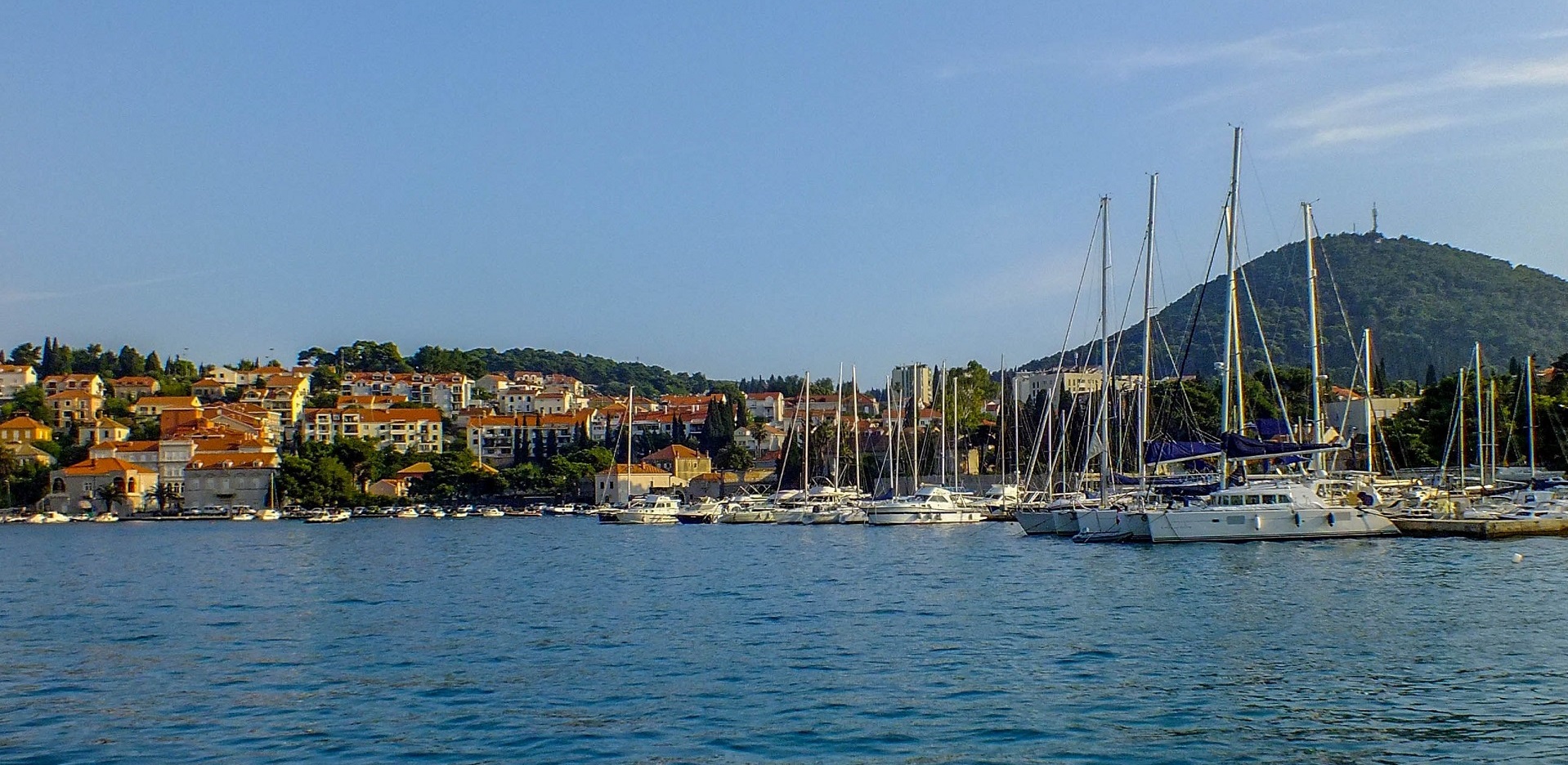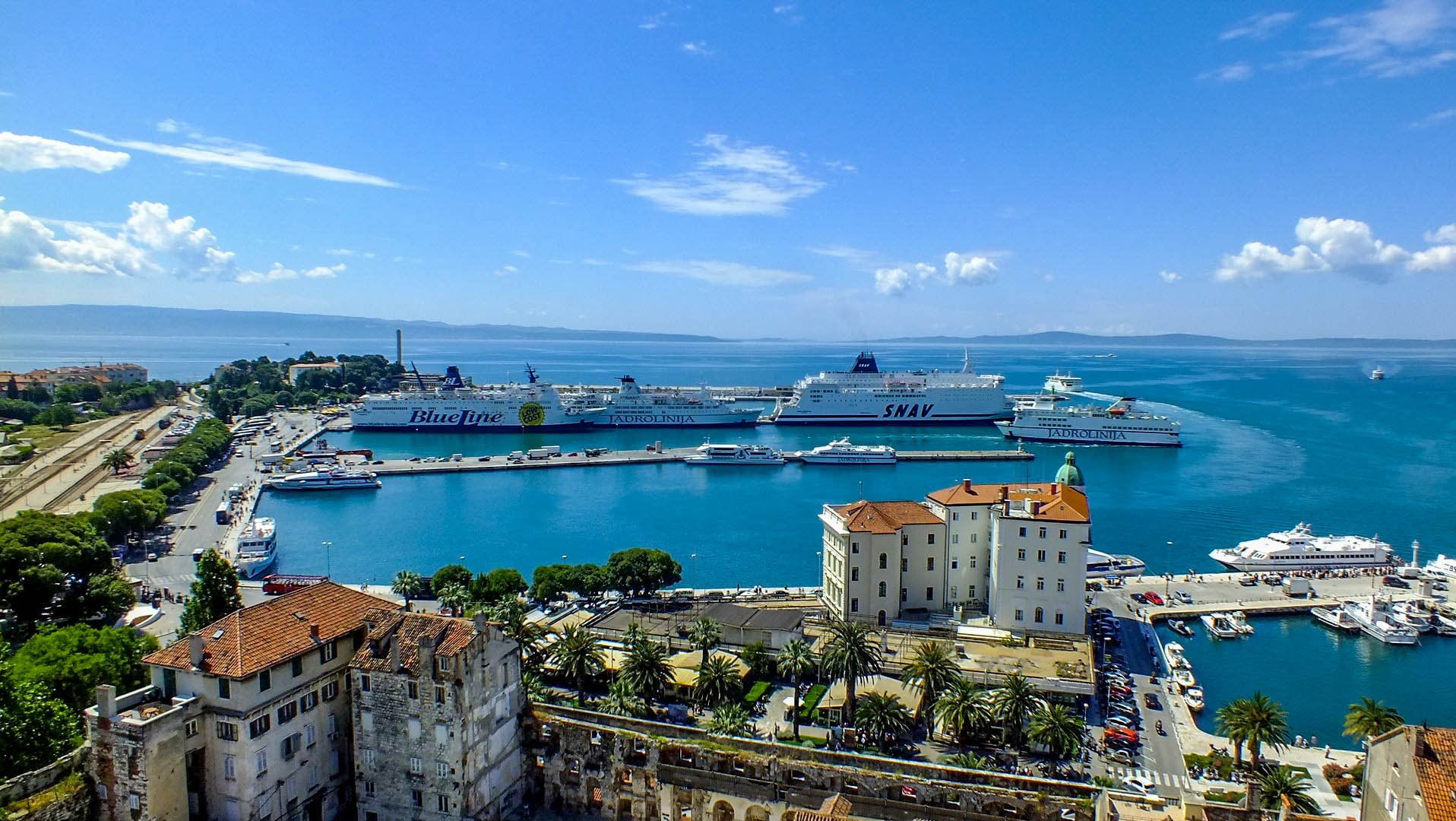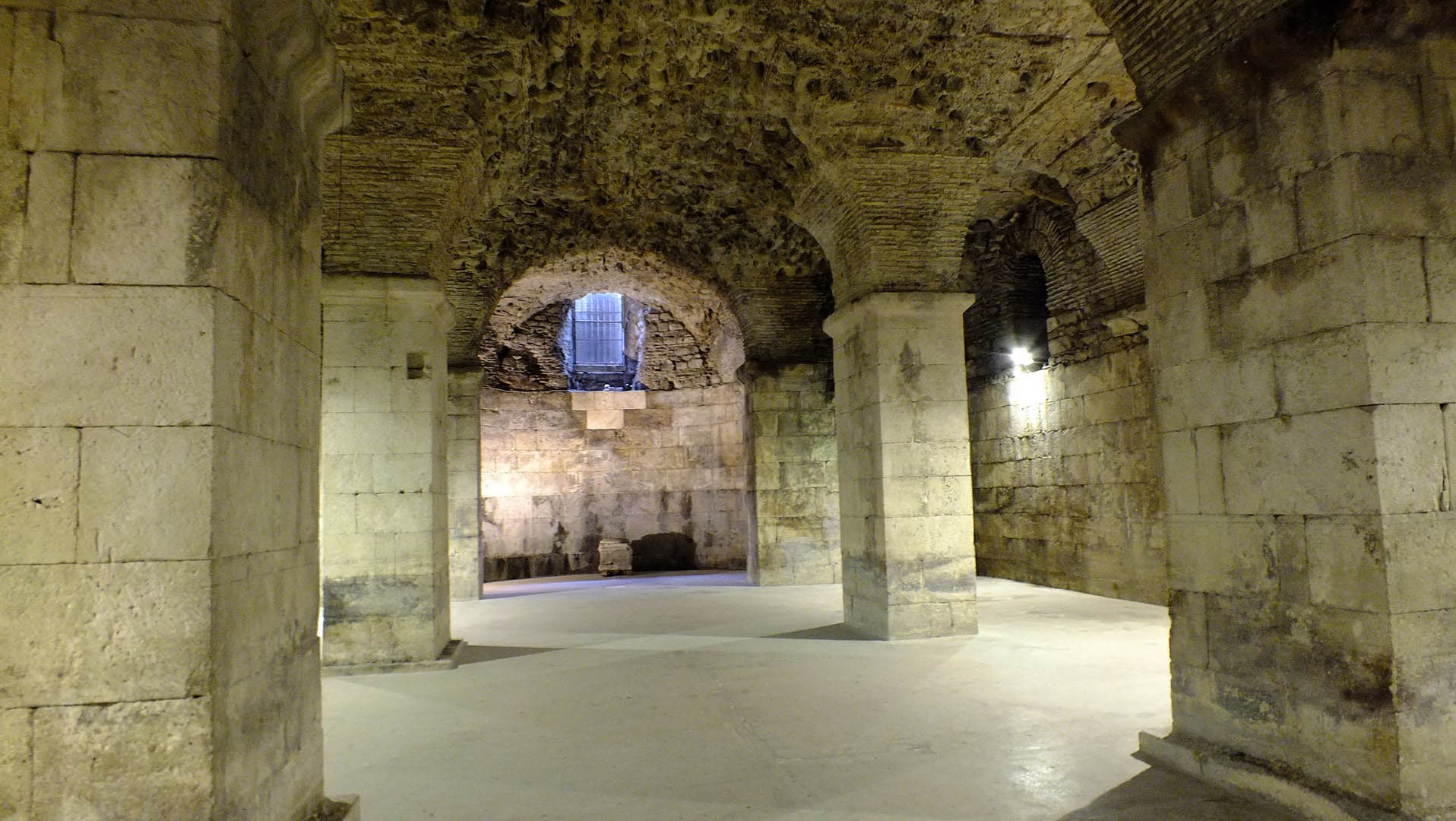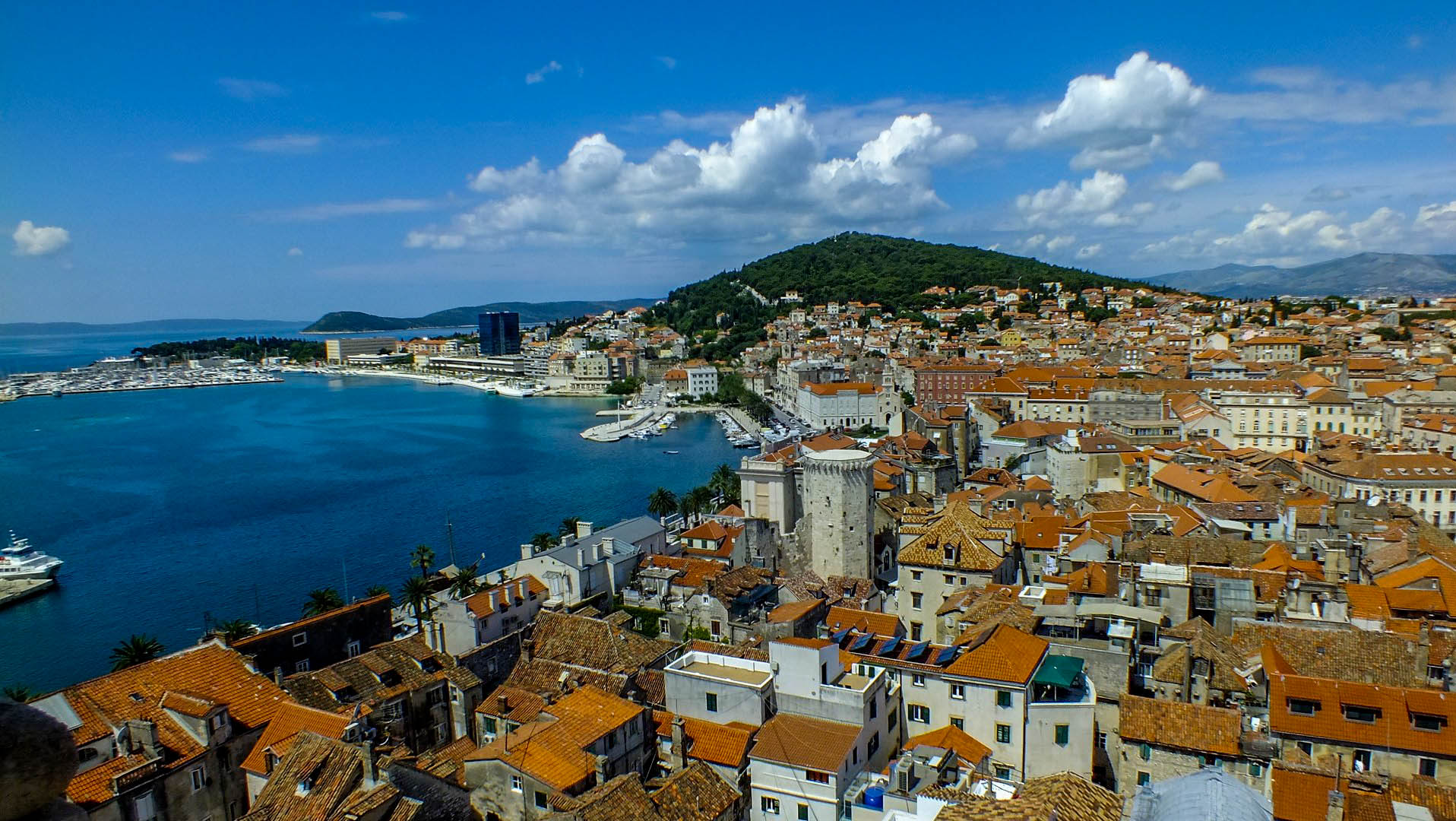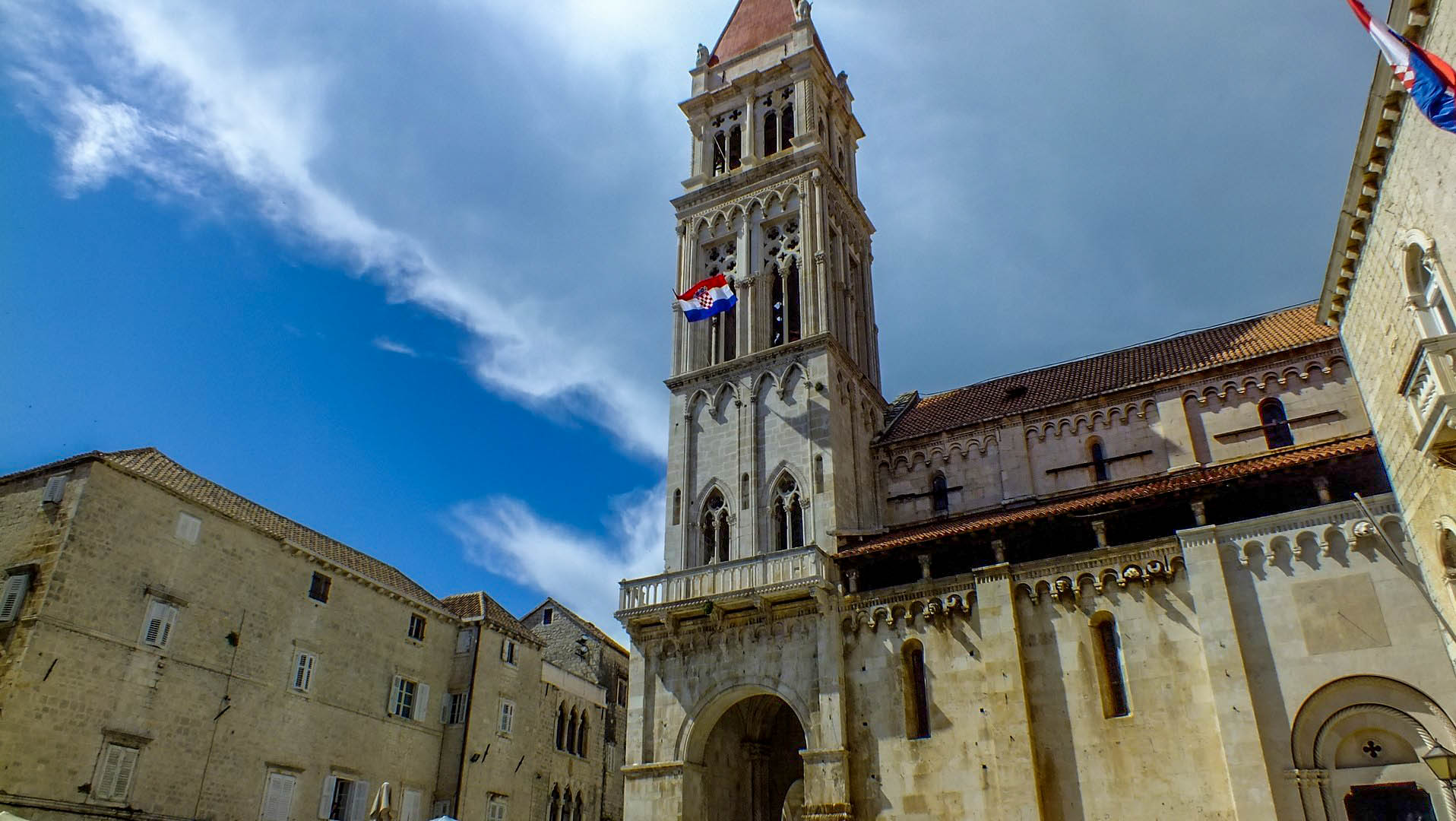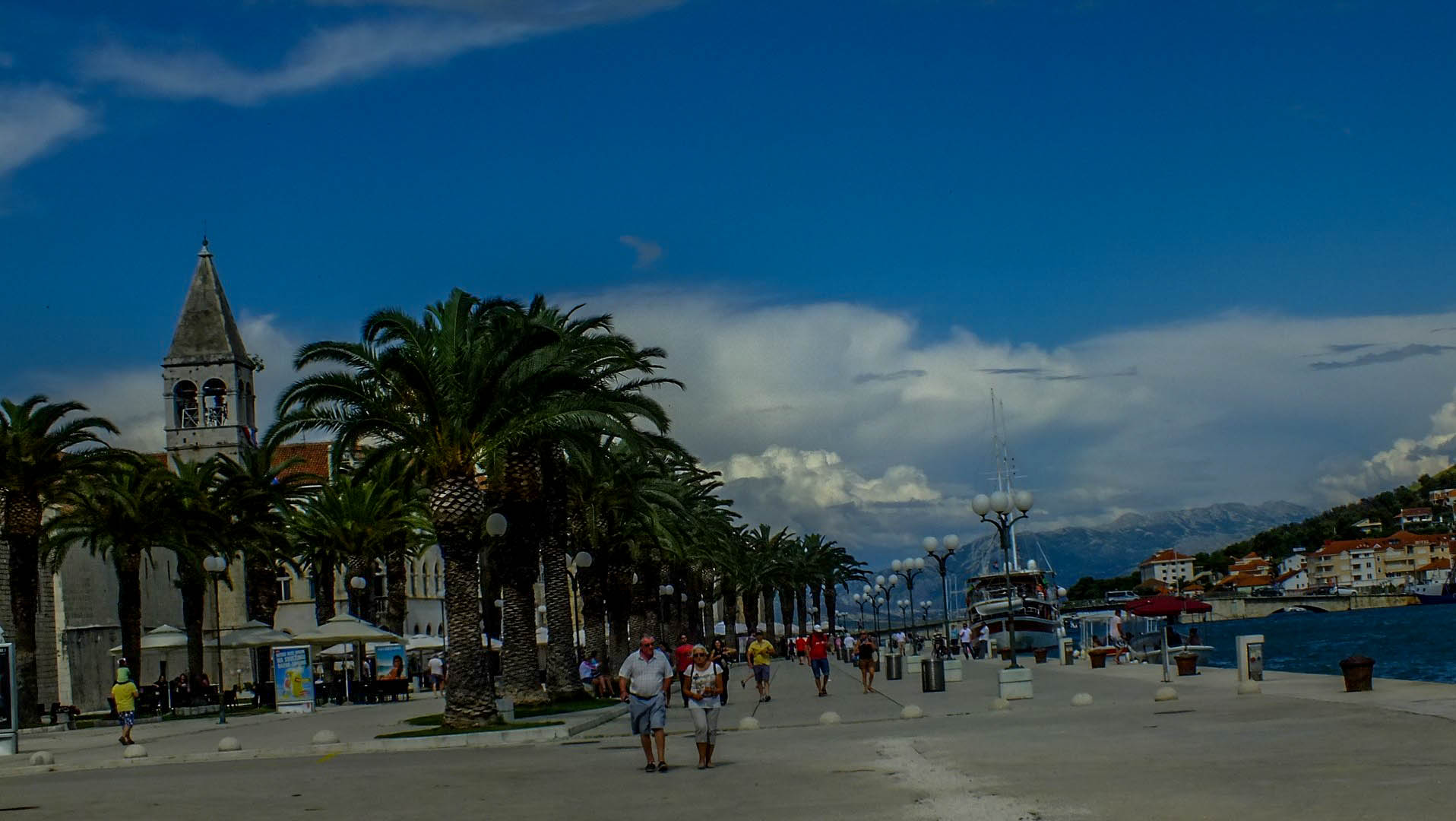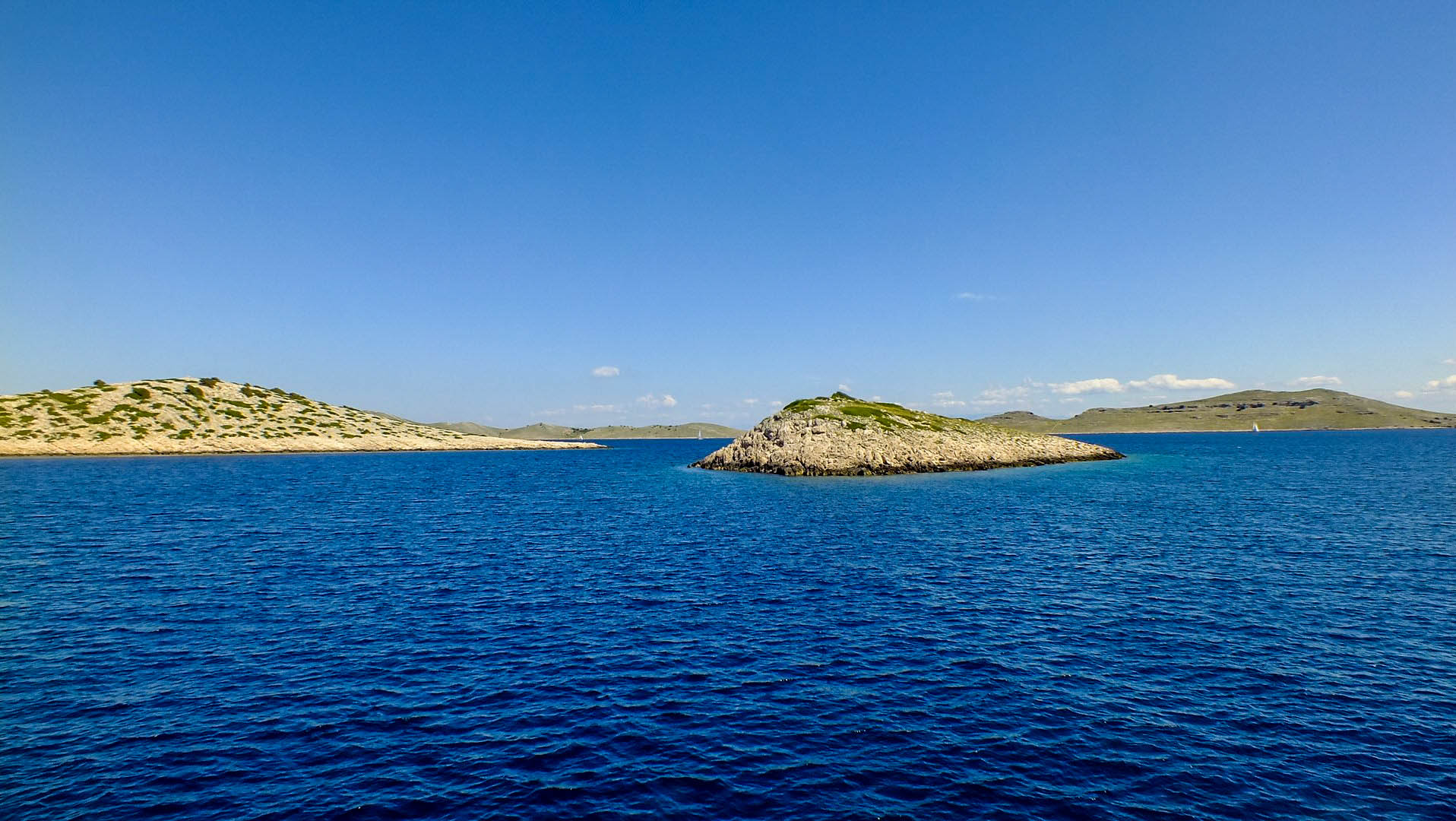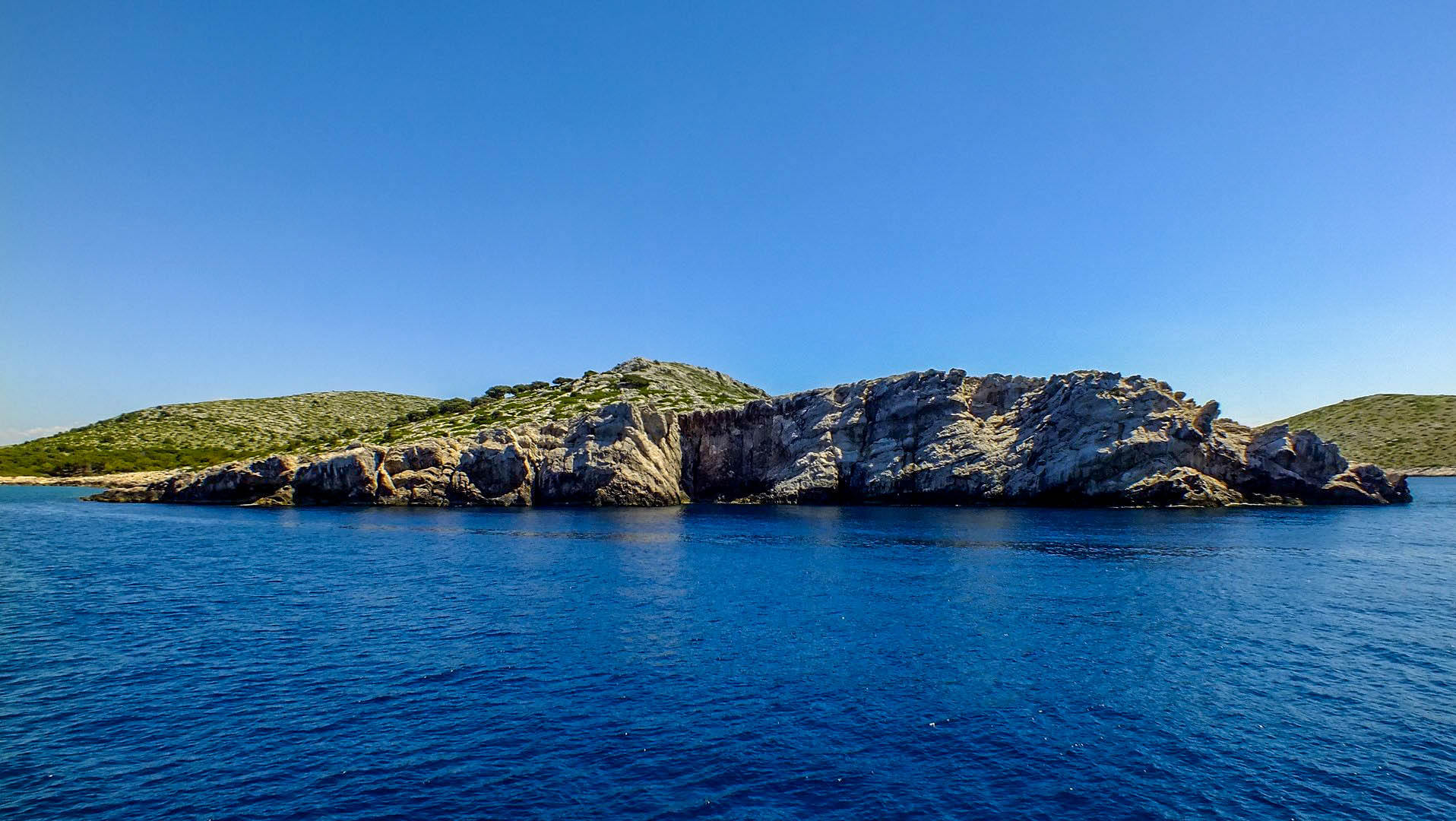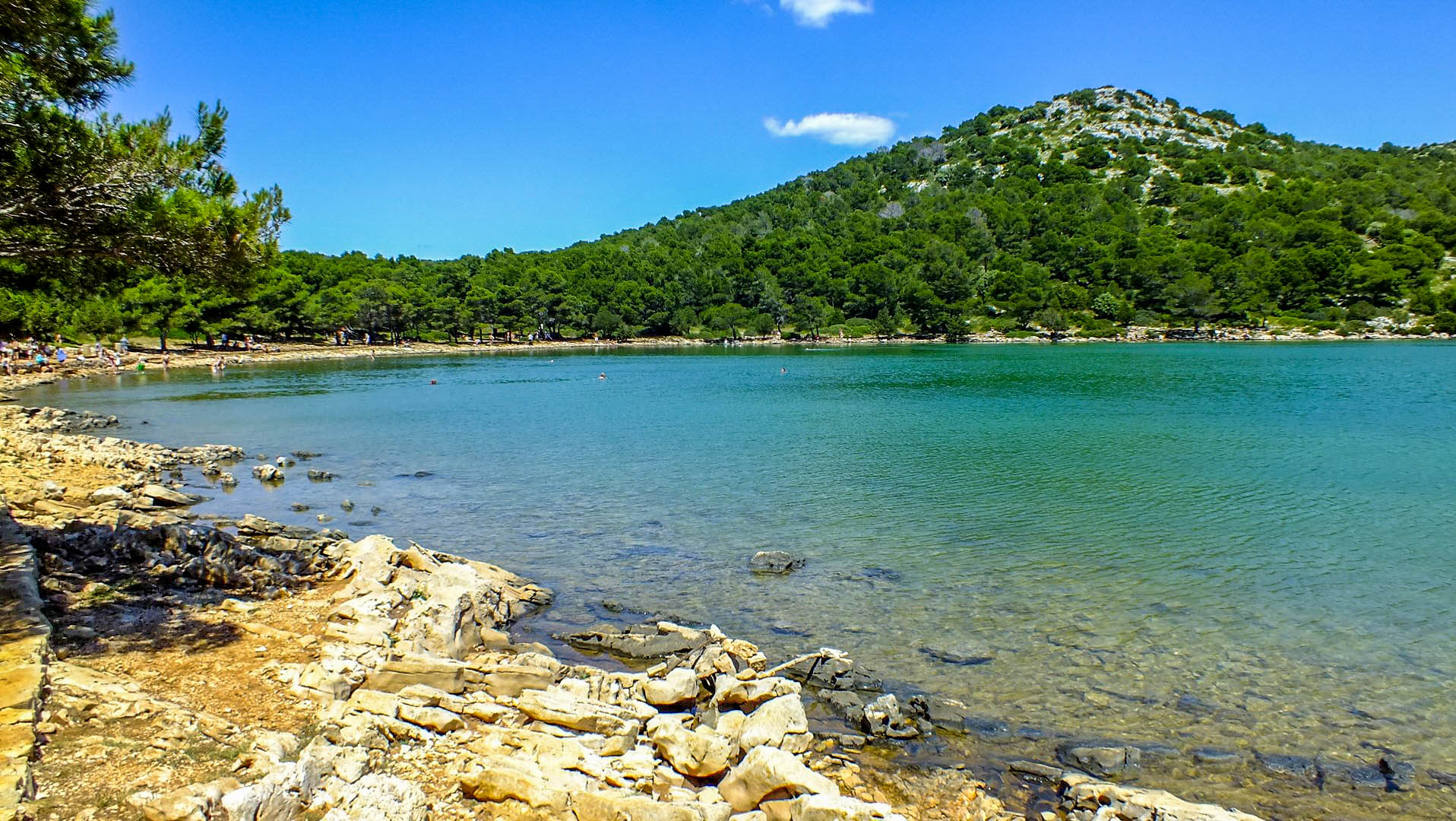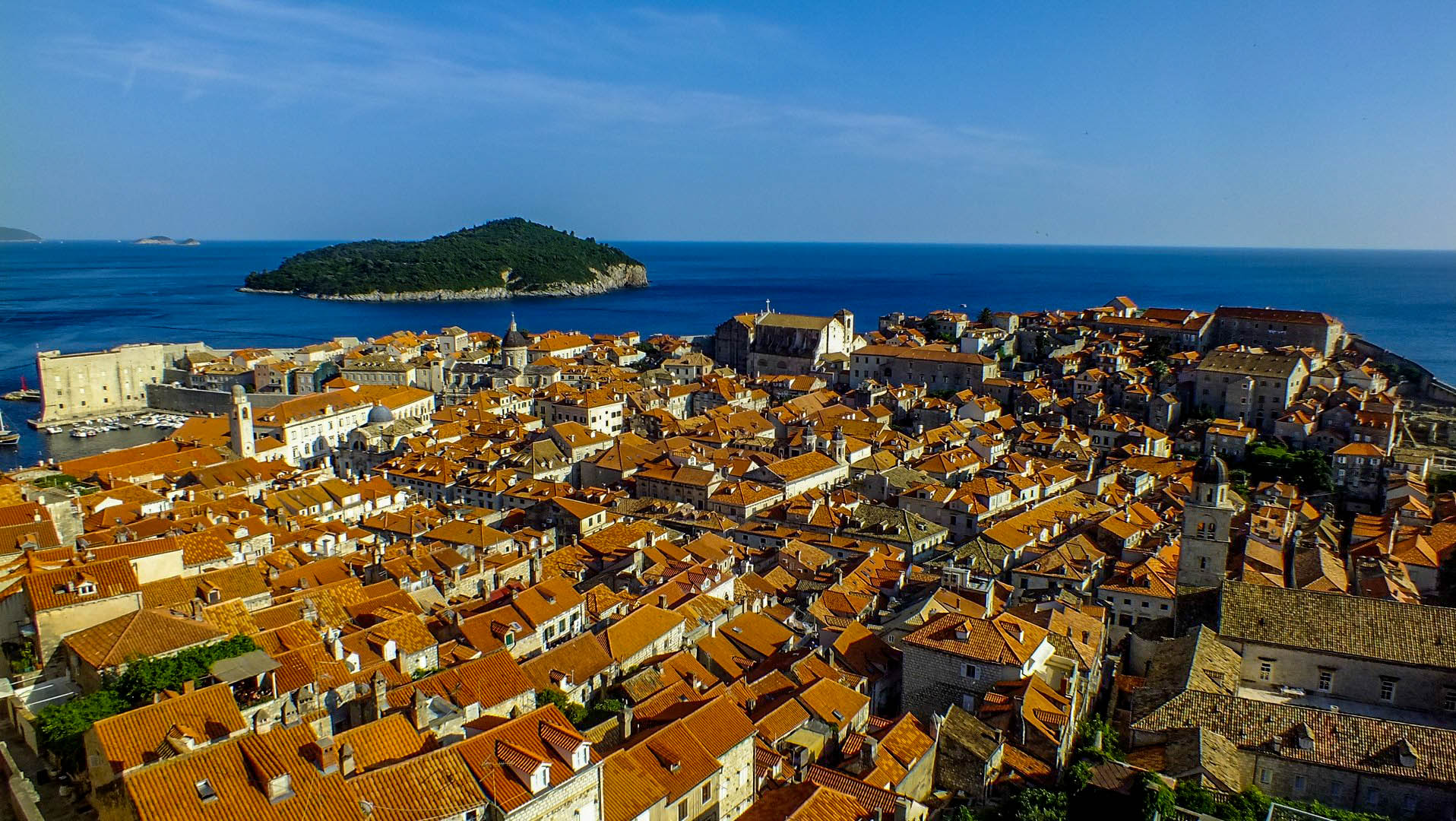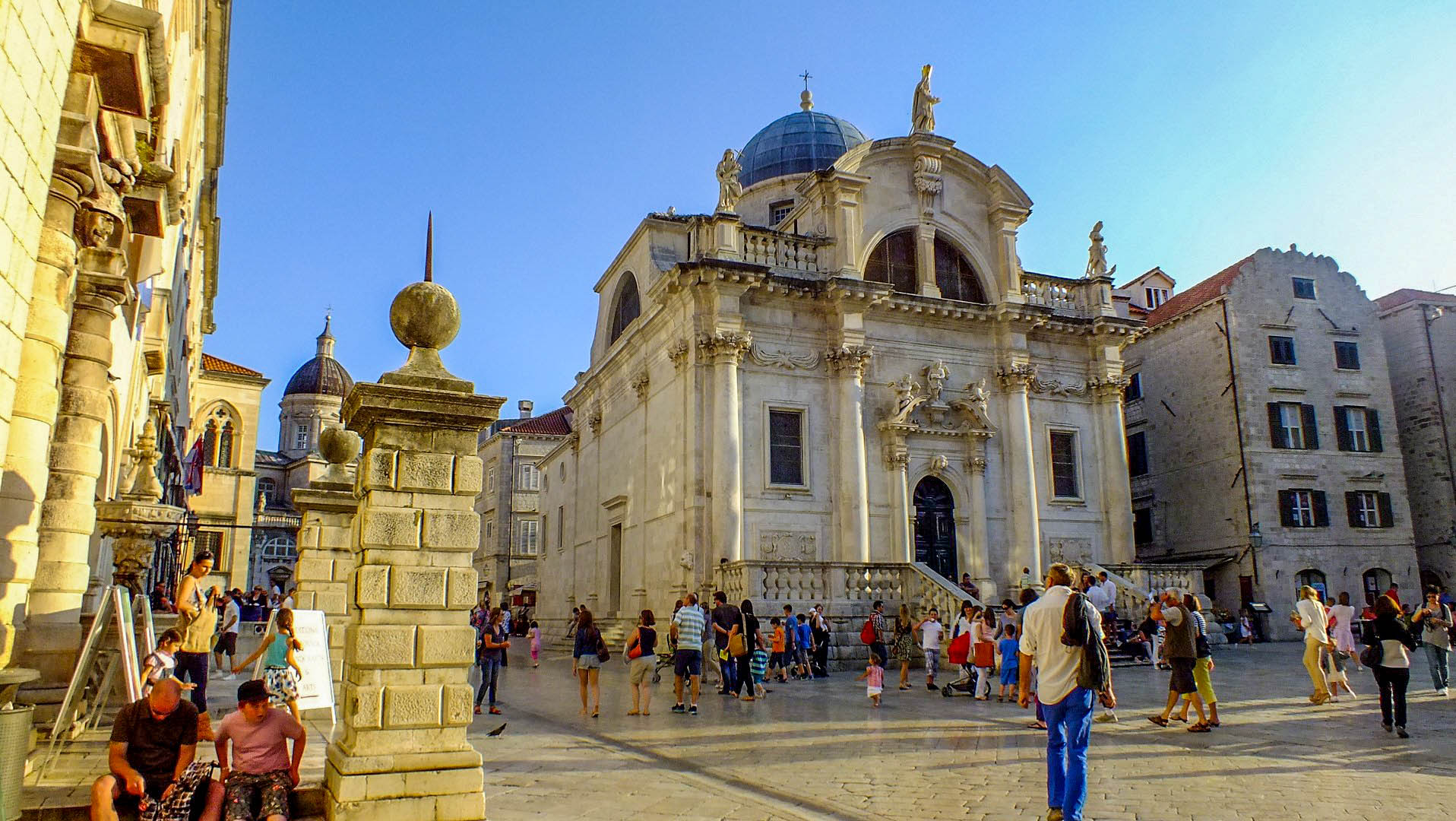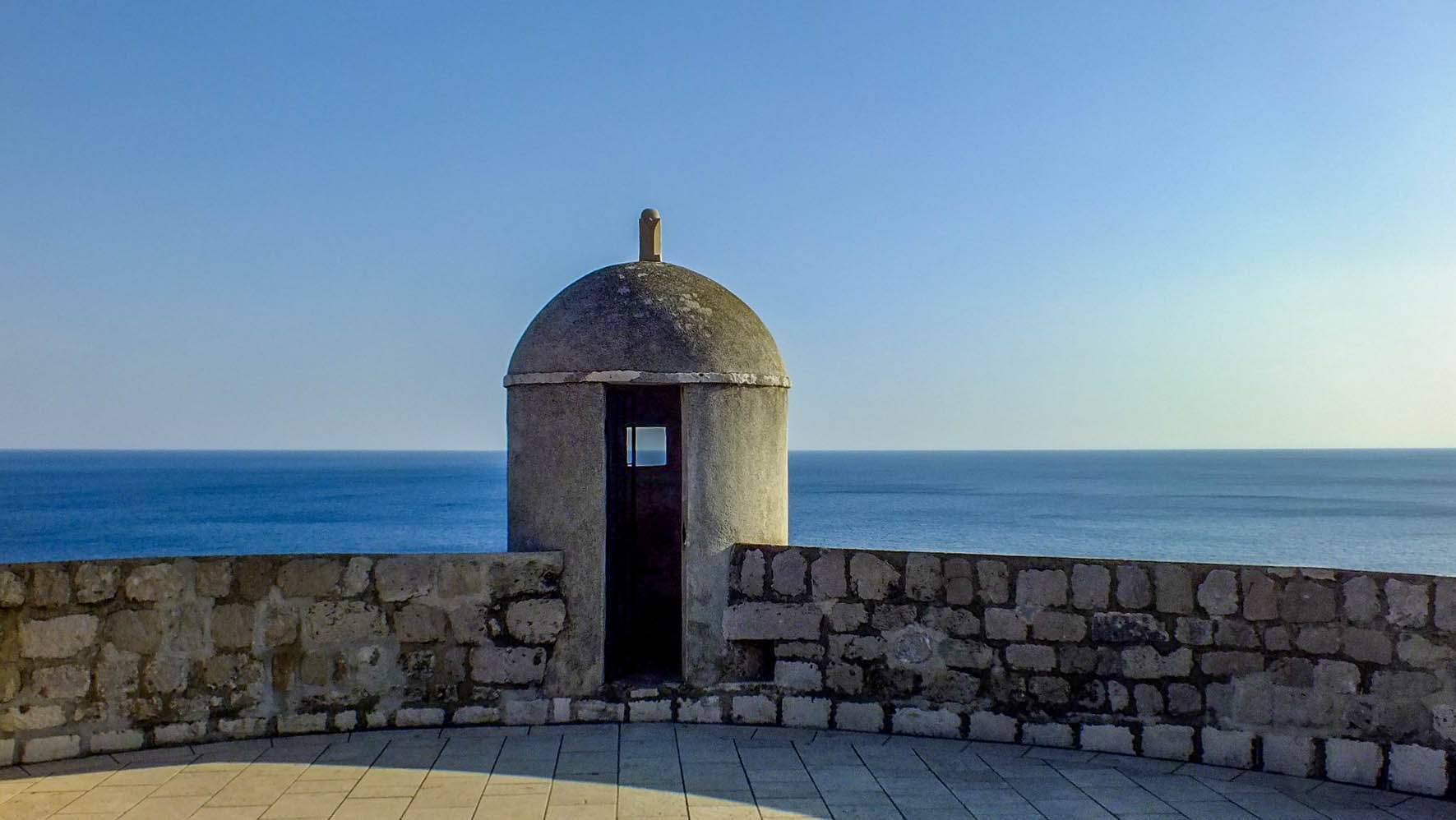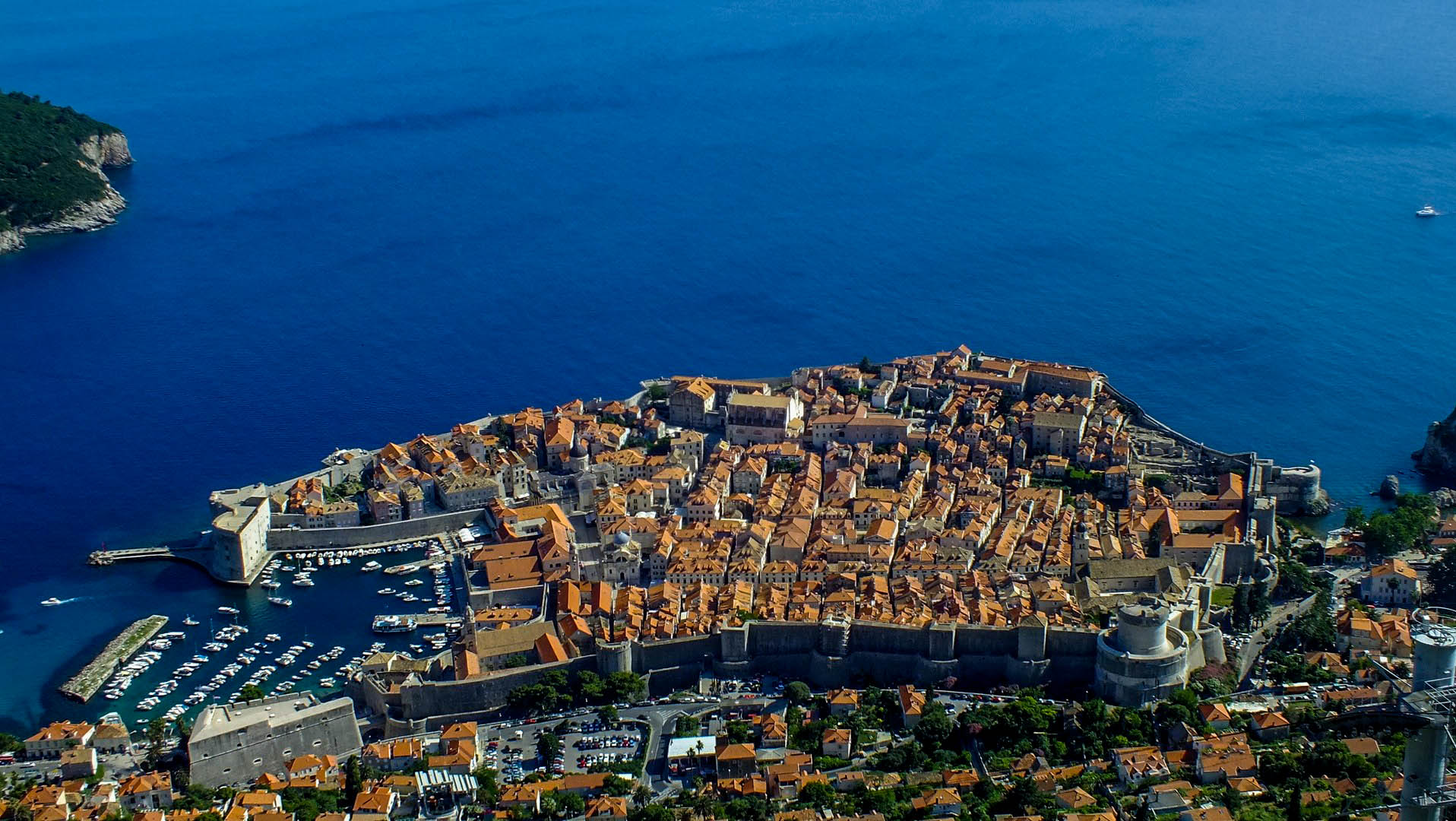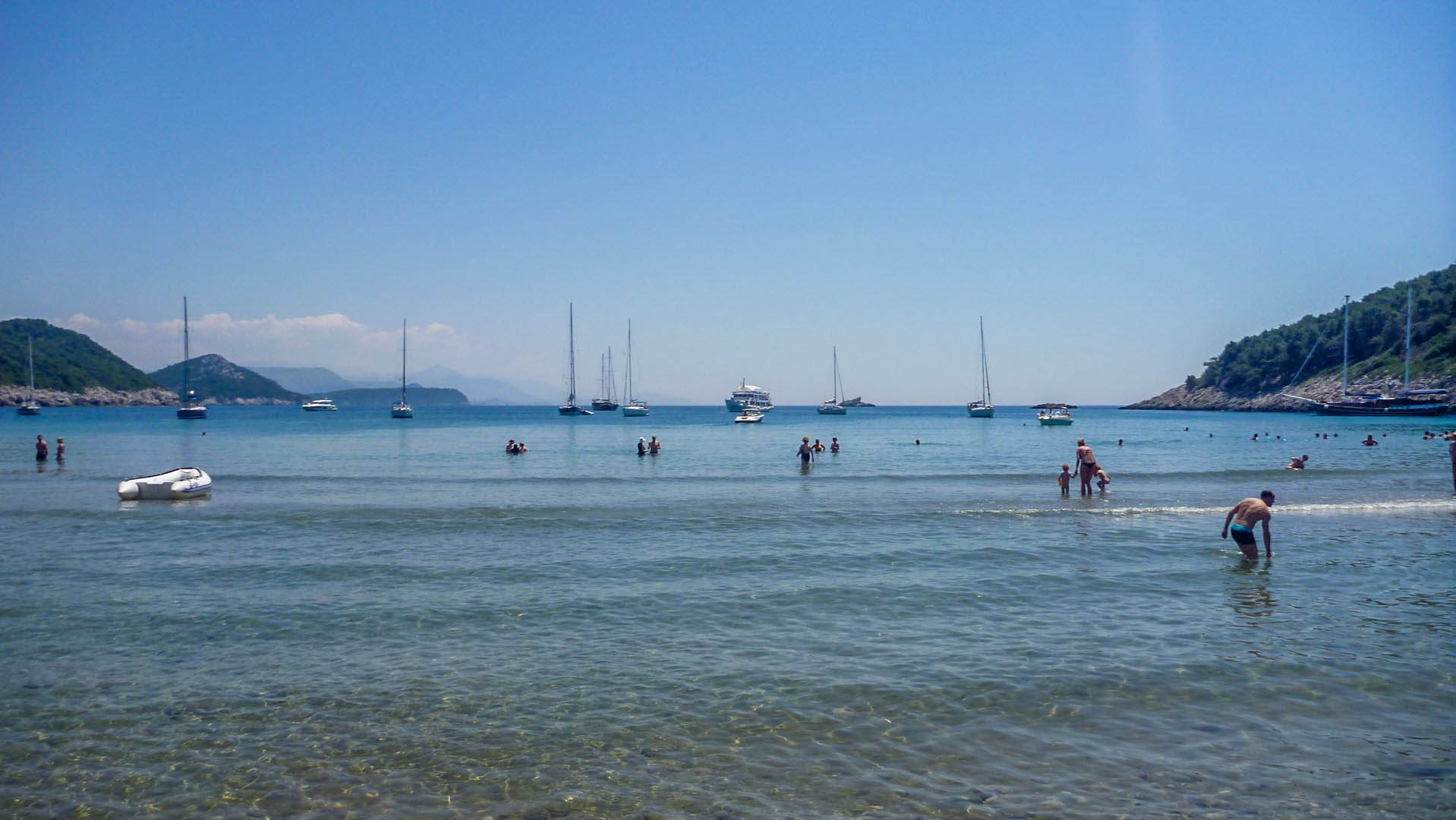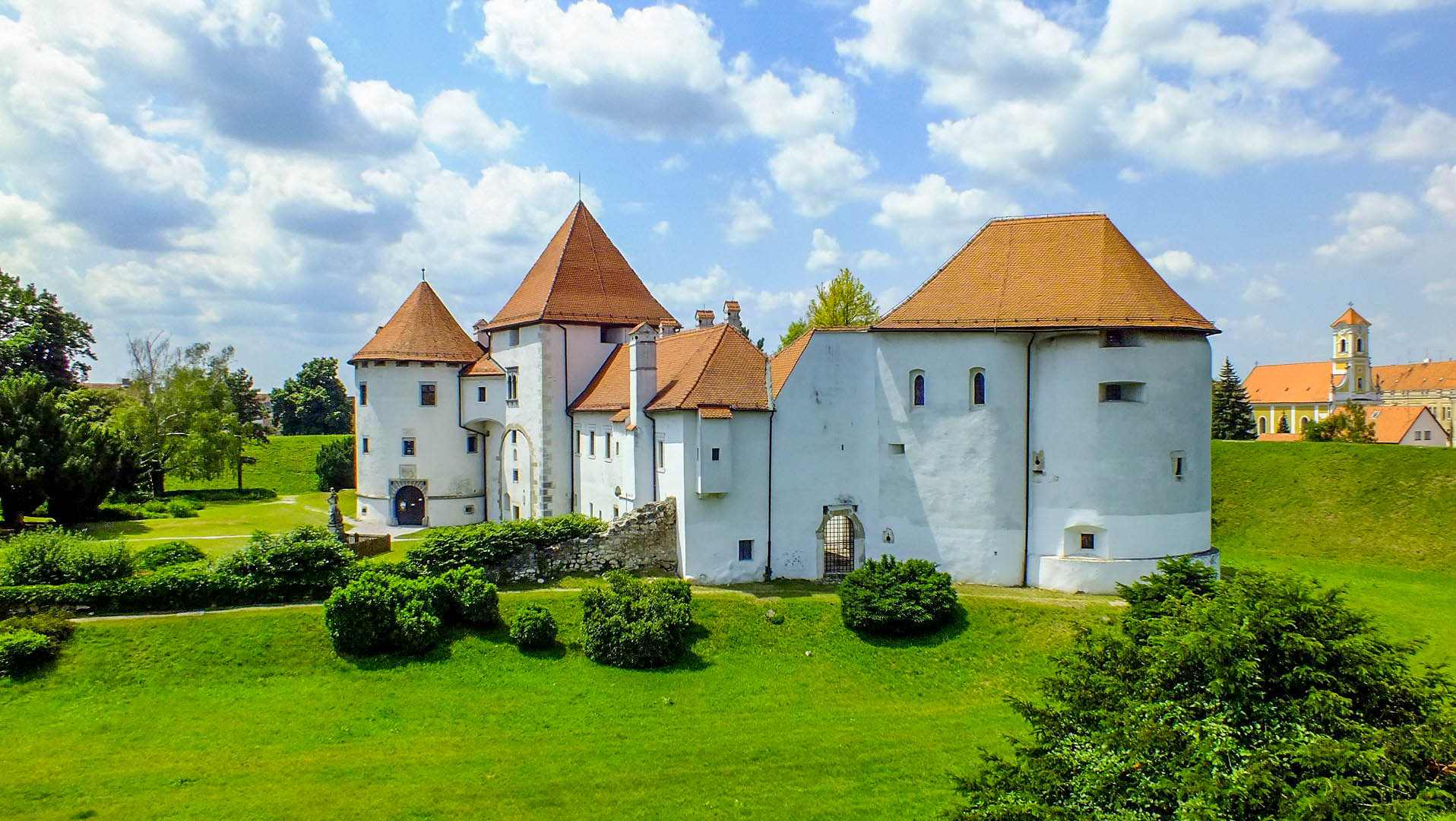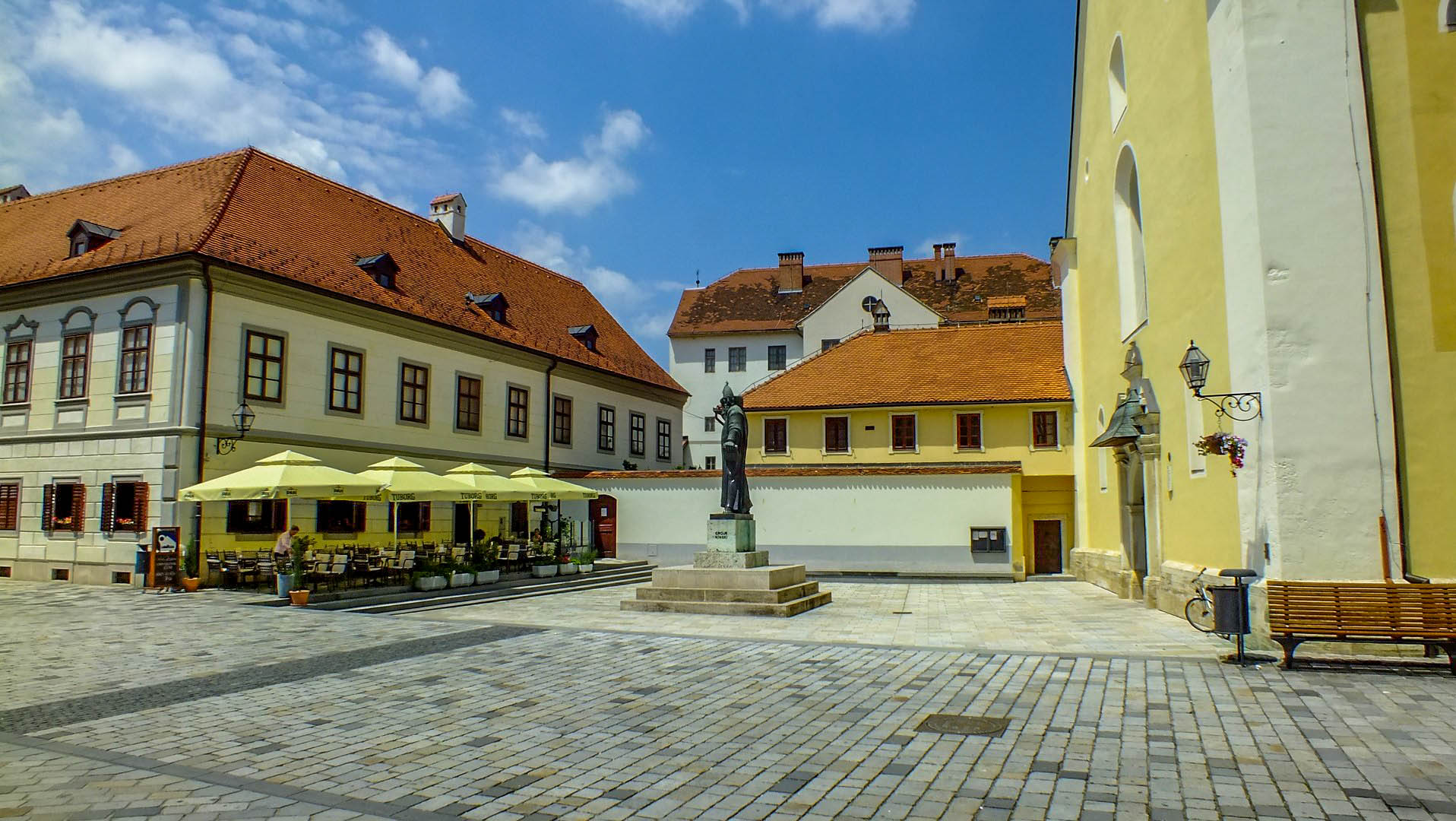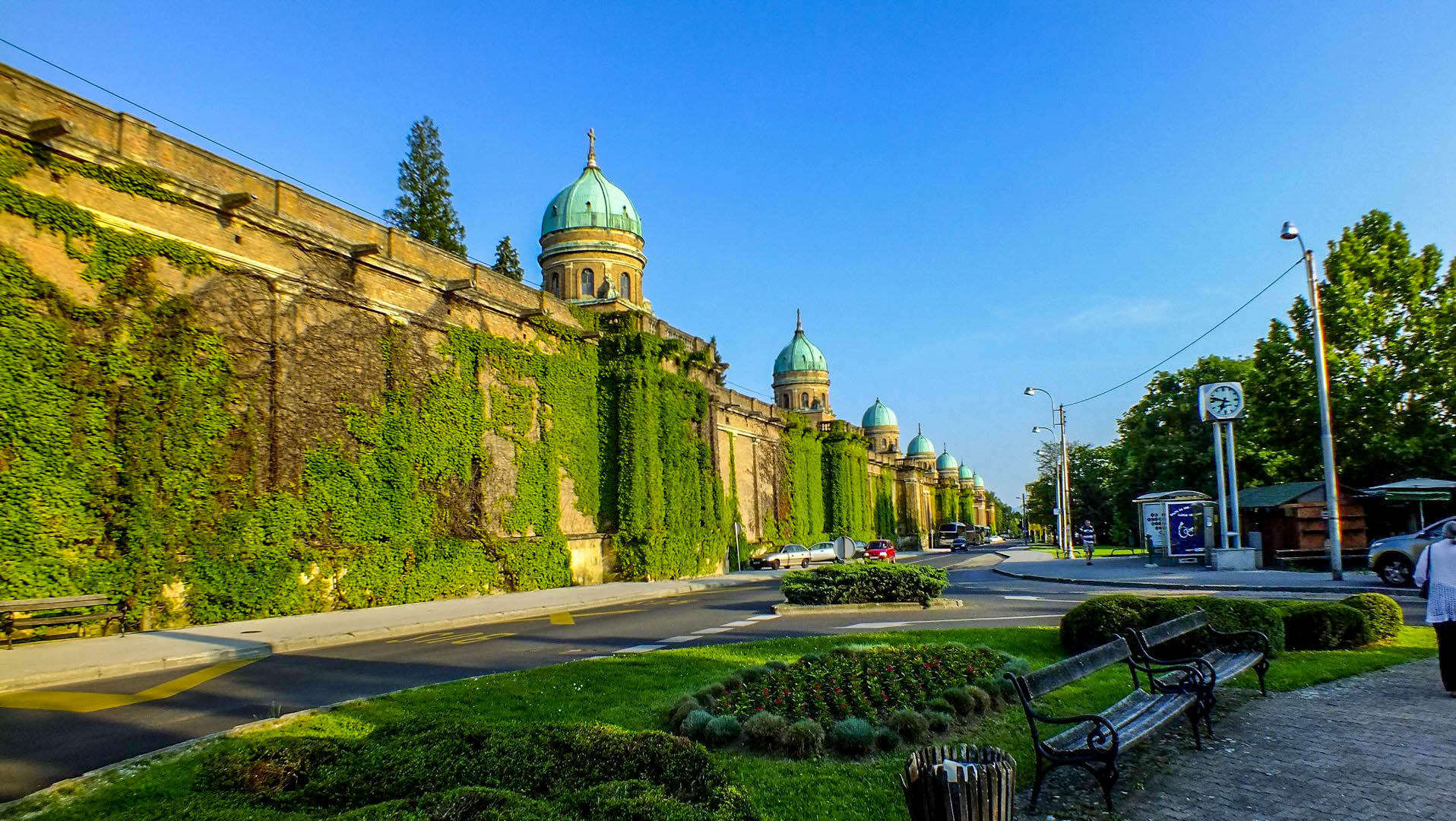After finishing capital city Zagreb and the beautiful Plitvice National Park in Part 1, we reached Split on the Dalmatian Coast
Croatia’s oldest (and second largest) city was founded in 305 AD by Roman Emperor Diocletian. He built a magnificent fortified palace by the sea as his retirement home, after he gave up the throne in Rome (he was apparently the only Roman Emperor to have retired voluntarily from his throne). Till today, the walls of Diocletian Palace and some structures inside survive and form the centre of the town of Split. It is supposed to be one of the finest surviving examples of a Roman palace and in 1979 UNESCO declared Diocletian’s palace a world heritage site
Split is the site of a natural harbour and it is a port of call for many Mediterranean cruise ships. The passenger ships berth right next to Diocletian’s Palace
Diocletian’s Palace
Since Diocletian’s Palace has been continually occupied since 300 AD, very few structures inside the walls date back to the original structure. However the basement/cellar of the palace, when excavated in the 1950s, turned out to be untouched since Roman times. The basements are now one of the biggest tourist attractions there. The layout of the basement is an exact replica of the palace in Diocletian’s times and hence very exciting for architecture or history students I imagine. However, we found it a little hard to be excited about boring walls made of big stone blocks under the ground. There was an old Roman wine press which was somewhat interesting, but otherwise can be missed (esp since entry fees is €25).
Above ground, it is a bustling city filled with cafes & houses interspersed with older historical structures like the beautiful marble columns of the Peristyle. But by far the best thing in the palace is the church of St Domnius – more specifically it’s bell tower. There are some rickety wrought-iron stairs hugging the sides of the tower which lead to the top. Navigating the stairs is somewhat of a challenge, especially if it is crowded. But the views from the top of the city and the harbour are breathtaking, and make it completely worth your while.
The best thing in the town of Split was it’s waterfront – called “Riva” in Croatian – next to the Palace. The Riva had a line of beautiful open air cafes on one side and the marina on the other. Much broader than the Marine Drive promenade, for example, it was the bustling with activity in the evenings. Beautiful private yachts were moored at the quays. It is the perfect place to have dinner, with a bottle of wine perhaps, looking at the ships in the harbour
Trogir
Trogir is another historic city on the Dalmatian coast, a UNESCO World Heritage site and just 30 km away from Split. Although Trogir does not have a central heritage building like Diocletian’s palace, the tiny island town of Trogir is also a very beautifully preserved historical city. We thought it was cuter than Split – it is definitely much smaller. There is a central church here too, the church of St Lawrence. The church had a beautifully carved doorway – and the ubiquitous bell tower. Though it wasn’t as hard to climb as the tower of St Domnius, the views of the port were equally breathtaking.
Trogir has it’s own Riva too, all around the outer walls of the city, culminating in the small Kamerlango fortress. The fort overlooks the entrance of the harbour, and was used as a harbour defense. Nowadays it is used for hosting concerts in summer – and is rather unkempt. It provides a very nice viewpoint for Trogir town as well as the pretty Riva – but the €10 entry fee is too much for what it offers. When we visited Trogir in late afternoon, beautiful yachts were docking on the marina, and there were lots of tourists as well as locals milling about. In our entire Croatia trip, the weather was beautiful and on that day it was no different. With a very mild sun, vivid blue skies and slight breeze from the sea, we felt like sitting there forever.
We moved to one of the waterfront cafes, enjoyed a couple of beers and dinner, before starting back for Split at around 9pm. However we chanced on some unnecessary excitement when no bus for Split was to be found. We waited at Trogir’s Autobusni Kolodvor for more than an hour, afraid to sit down lest the bus for Split drive by. The tiny town’s bus stop was completely deserted then. Finally a little after 10pm, the bus for Split rolled in and we clambered on board. So if you also want to visit Trogir while staying in Split, leave early.
Kornati Islands
We had booked ourselves a motorboat tour with a local travel company for the Blue Cave & Hvar tour. The blue cave is a grotto (seacave) on Vis island where the water glows blue due to the filtered sunlight that reaches the cave. There is a similar grotto on another island Visevo, where the water glows green. And then we’d goto the town of Hvar, the crown jewel of the Dalmatian coast. However, the previous evening the Adriatic sea was adjudged too rough for the tour and it was cancelled (money refunded of course)
Fortunately, we were able to jump onto another sailing tour – to the Kornati islands. We were picked up at Split at 7 am and driven 100 km away to the town of Vodice, where we boarded a ferry and set off. The Kornati islands are a dense cluster of 100+ tiny islands off the coast, composed of karst limestone. They were probably a hill chain before they got submerged and now only the crests are seen as islands. Some coarse grass grows on the islands – but none of the islands have any sweet water. Hence there is no human habitation on them.
But visually the Kornati islands are spectacular – white specks in blue seas. The biggest island in the chain, Dugi Otok, is big enough to have a salt water lake inside it. All the boats dock in Dugi Otok for an hour or two – perfect to go have a nice swim in the exceedingly saline lake. The lake was very pretty, although shore was full of pebbles instead of sand. Nevertheless, some older European tourists proceeded to sun themselves topless, but it was mostly a gross sight.
Lunch was served on board the boat – it was either cold chicken roast or cold grilled fish – with unlimited bread and local wine. So feel free to carry your own food. There was a local musician’s troupe performing, and they were playing some energetic music to keep everyone’s mood up on the way back. Weather was again exemplary and we spent most of our time on the upper deck, the wind on our face. The tour cost €50 per head, and it was very good value for money. We would have loved to rent on the numerous sailboats instead of the ferry, but the price difference was very steep
Dubrovnik
Dubrovnik is the main tourist town on the Dalmatian coast. Located in the extreme south of the country, it is actually cutoff from Croatia by a small strip of land belonging to Bosnia. So our bus stopped at the checkpoint, where the border patrol checked everyone’s papers before we could continue. Thankfully the two neighbours Bosnia and Croatia have some working arrangement so one doesn’t need to apply for a Bosnian visa to travel on a bus from Split to Dubrovnik. The bus took 5.30 hours and it was one of the most picturesque road journeys ever. The route is along the Dalmatian coastline where the combination of deep blue of the Adriatic, the lush green meadows and red tiled villages/towns were magical. If you can do it, rent a car and drive from Split to Dubrovnik. It should rank up there as one of the best drives ever.
Dubrovnik, referred to as Pearl of the Adriatic, is another well preserved medieval city with red tiled roofs, much like Split/Trogir. However, Dubrovnik’s old town (Stari Grad in Croatian), is still enclosed by massive seawalls, much bigger than Split or Trogir – hence the old city is usually referred to as Walled City. The old town is actually an separated from the mainland by a moat. The insides of the Walled City are also more maze-like, with one broad main road called The Stradun. And narrow lanes leading off from both sides of The Stradun. The entire walled city is made pedestrian only – and each of the small lanes is a combination of shops, cafes and homes.
There are numerous touristy structures inside the walled city like Rector’s Palace, Big Onofrio’s Fountain, Orlando’s column etc, but they aren’t that big a deal as they are made out to be. It is a usual neat and clean medieval town with some stately buildings like the Sponza Palace, Franciscan church etc. It is good to walk around, with a gelato in your hand, peering into the small lanes once you are done with the bigger stuff. But the one thing you definitely cant miss doing is walking the city walls. The broad city walls encircle the entire Stari Grad and provide some stunning views both in and out of the city. There is a charge of 90 kuna (Rs 900) per person but it is totally worth it. The walls are about 2 km long.
The other must do thing in the walled city is the cable car. The cable car office is easy to find – they have put up signboards inside the city pointing to their office. A trip on the cablecar costs 100 kuna, and the views of the city from the observation deck up there are fantastic! We rode the cable car first and did the city walls later, as the day was a little hotter and we thought it would be better to walk closer to the sunset.
Dubrovnik is sometimes known as the party capital of Croatia. There is an annual summer festival in July and Aug which goes on for 45 days. There are numerous concerts, plays & dance performances during that period. We travelled in early June, much before the festival. And with our usually hectic day schedule, we did not really explore the Dubrovnik nightlife.
The Game of Thrones followers might appreciate that Dubrovnik is the venue of Kings Landing.
Elaphiti Islands
Close to Dubrovnik are the Elaphiti islands composed of 3 large inhabited islands – Kolocep, Lopud and Sipan – and numerous small uninhabited islets. All travel agents offer saling to the Elaphiti islands as a daytrip. On our last day in Dubrovnik, we took the Elaphiti cruise, mainly to get to Sunj beach on Lopud island. All throughout our trip, we hadnt really come across a beautiful white sand beach. Most of the long coastline of Croatia is rocky and is not blessed with too many sandy beaches. Zlatni Rat is usually touted as one of the top 10 beaches in the world, but as expected, it is perpetually overcrowded. The coastal city of Dubrovik does not have a single sandy beach. But Sunj beach of Lopud was supposed to be quite good, so we checked it out.
After docking on Lopud near the luxury Lafodia hotel, Sunj is a small 5 min walk across the island. Sunj was a small beach with beautiful clear waters. There was a very ‘Goa’ vibe there with beach chairs and shacks serving beers. We spent more than 2 hours there (as did everyone else on our boat) – swimming and sunning ourselves. The other two islands were smaller stops and nothing much to write home about
Varazdin
We wrapped up in Dubrovnik and took an early morning flight to Zagreb. We had to come back via Zagreb because there are very few international flights from Dubrovnik. And our return flights to Mumbai were early in the morning, so we had to come back to Zagreb the day before. Instead of exploring Zagreb further, because we had covered most of the big attractions on day 1, we caught a bus to our last destination of the trip – Varazdin.
Varazdin is yet another historical town, very close to the Hungarian border. It is described as baroque town, with majestic buildings lining wide streets, beautiful buildings and an old fairy tale castle in the middle of the town. Varazdin is 90 min from Zagreb by bus. The Stari Grad (old town) is again pedestrian only, with cobbled streets and open air cafes. When we visited in June, the streets had very few tourists. We sat down in a open air cafe, relaxed with some excellent local wine before catching a bus back to Zagreb.
Mirogoj cemetery, Zagreb
We were back in Zagreb by early evening. We had missed Mirogoj cemetery on our first day in Zagreb because, embarrassingly, we could not pronounce it correctly (pronounced as “Miraguoy”). Everyone we asked, we were met with blank faces. On our final day in Croatia, we figured we would give Mirogoj a shot before it became dark. We plotted using tram routes the best we could and boarded trams. The closest tramstop was about a km from the cemetery, and from the tramstop it was a walk uphill. Now you are probably wondering why were we putting up so much effort for a cemetery. Mirogoj, as can be seen from the photos, is an ornamental cemetery where all the famous Croatians (prime ministers, noblemen, celebrated artists, sportspersons etc are buried). The massive outer walls of the cemetery are covered with ivy, making it look like a very big mansion rather a cemetery and the insides are more like a park with flowers and trees and exceedingly ornate graves. There are lot of sitting areas and local Zagreb citizens use it like a park
Where to Stay
The international hotel chains arent that widespread in Croatia yet. There are standalone charming hotels in the bigger cities like Zagreb and Dubrovnik, but the most common form of accommodation are guesthouses. Enterprising Croatian citizens have created guesthouses – from 2 empty rooms in the upper floor, to big 15 room professional units, in the space around or inside their homes. We had seen this in Ladakh, where we had loved staying in guest houses. And we really loved staying in them in Croatia. Such guest houses are referred to as sobes (croatian for rooms). Most of them do not offer any breakfast – only boarding. The rooms are always neat and clean and each rooms have the personality of the owner in the decorations etc.
Some Sobes have a common kitchen guests can use – with basic utensils etc. So if you are vegetarian and carry your own food, such sobes are perfect. Pricewise also, sobes range from €30 to €120, depending on the furnishings and location. We loved our guesthouse in Dubrovnik, in Lapad. It had a separate kitchen and dining room away from the house and couple of open tables under cover of vines. Sitting there in the evening with glasses of local wine, going over the day’s photographs or just having casual conversations with the owner of the guesthouse was very pleasurable. Each and every guesthouse owner were exceedingly friendly and made us very welcome.
All our guesthouses were in the €50 range
What to Eat
Food is where we scrimped a little, as food in comparison is much more expensive. We avoided fancy restaurants – and from what we could tell, there isn’t anything standout in local Croatian cuisine. Bakeries are fairly popular in Croatia, like rest of Europe and they formed the bulk of our meals. Locals in Zagreb too seem to favour bakeries a lot – with lot of people chomping down their lunch while walking. Some of our dinners at open air cafes at Split and Trogir Rivas were quite good – the cuisine was mostly continental/italian
